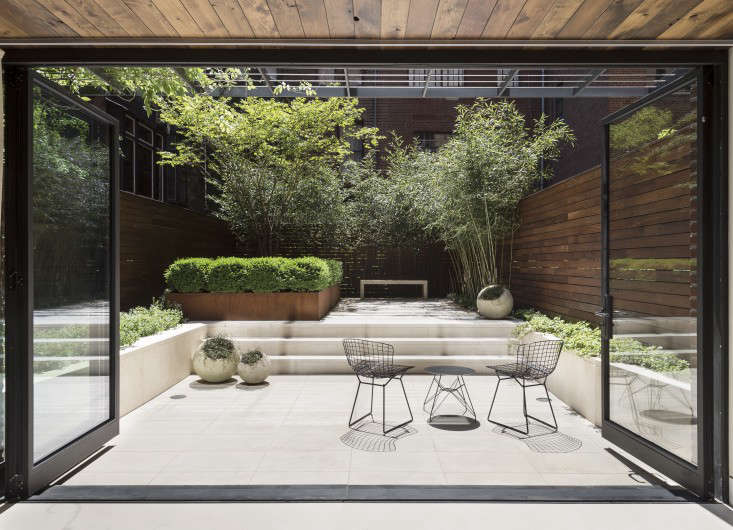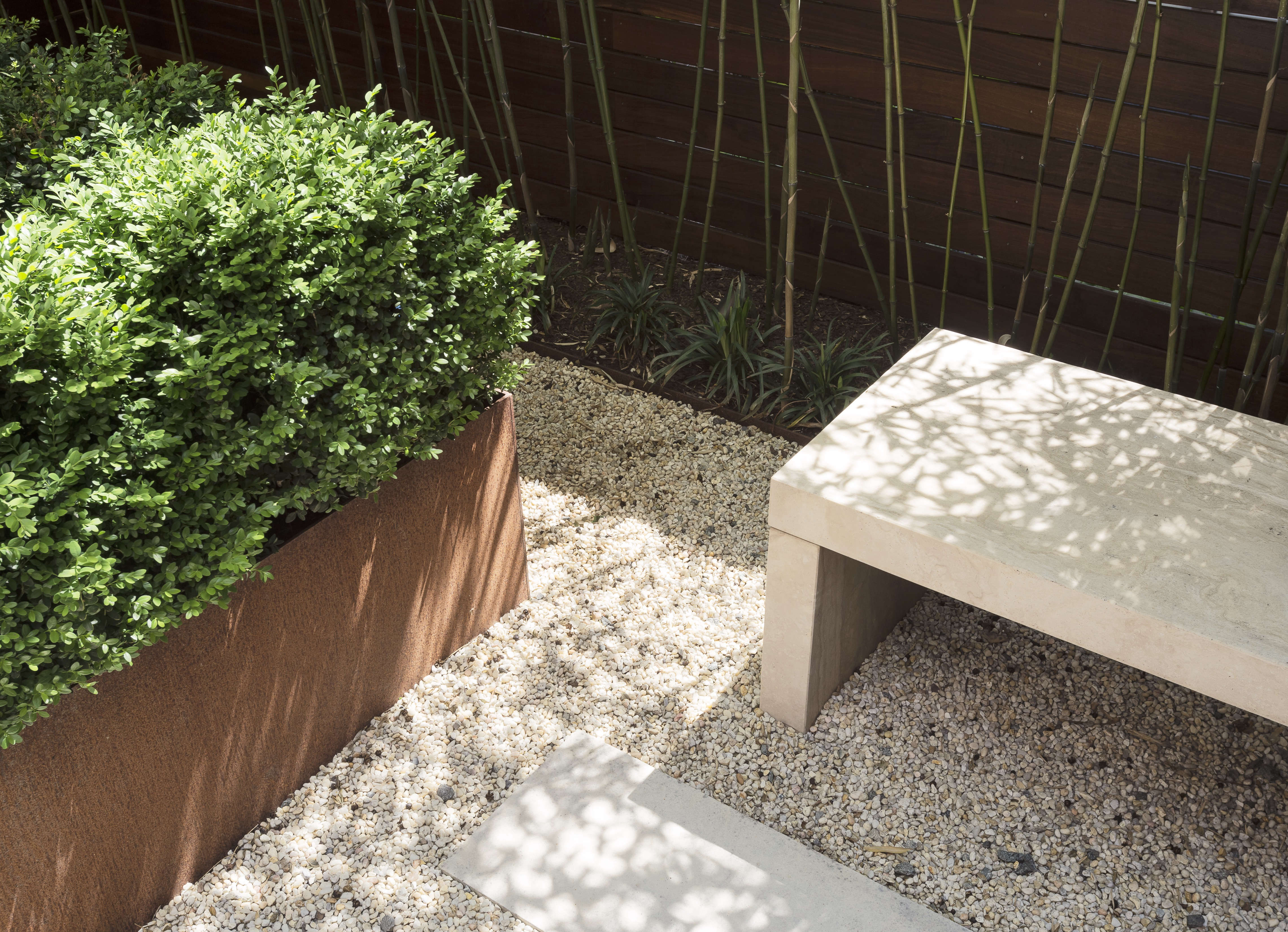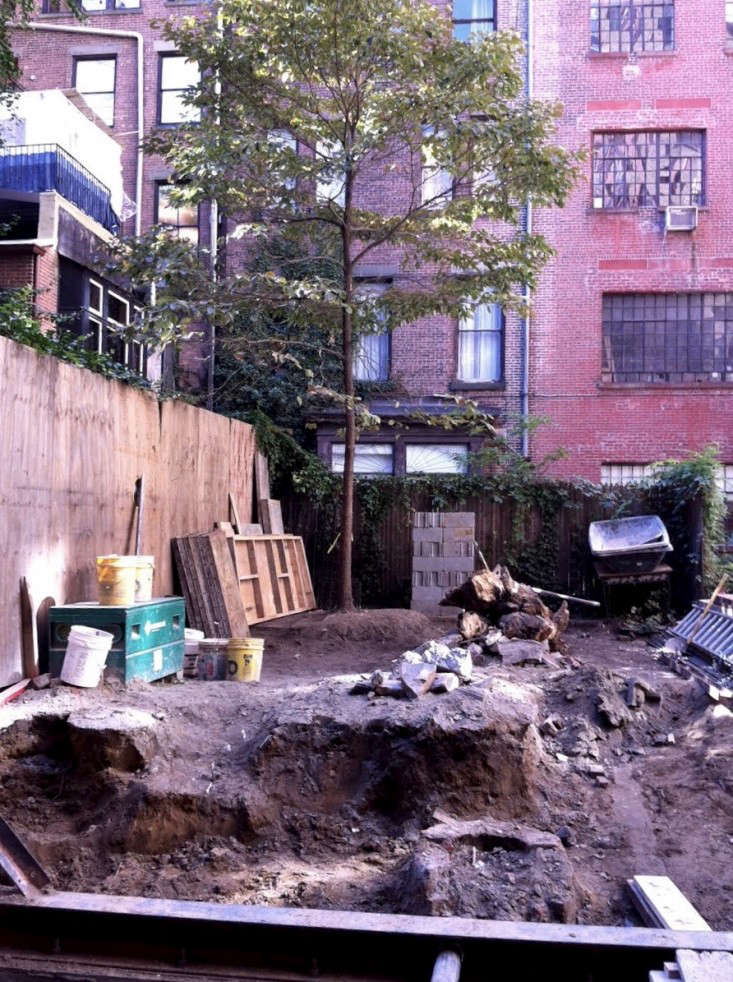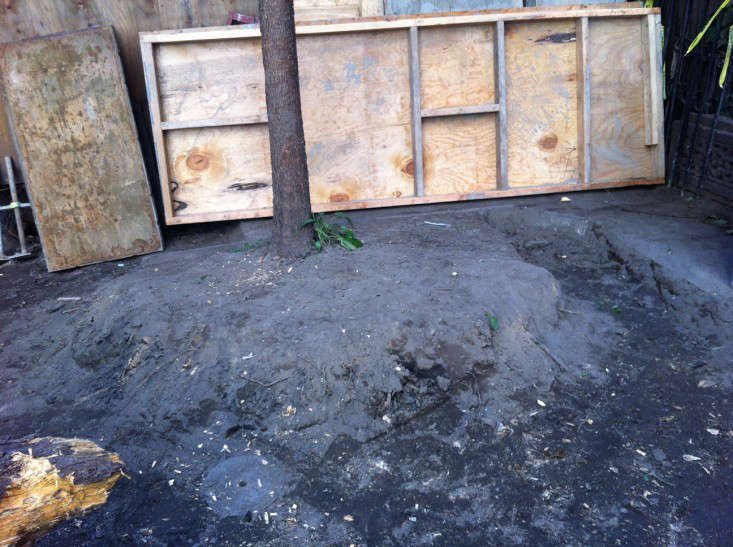The word "fishbowl" came to mind the first time designer Julie Farris of XS Space visited a client's townhouse backyard in Manhattan's Greenwich Village. "Visible off to the right was the back of a full-on apartment building—with window, window, window looking out toward this garden," she says. "The client definitely wanted some more privacy."
The solution? An airy hedge of bamboo provides screening at the garden's perimeter while a pared-down palette of green and white focuses the eye on the center of the space. "The white limestone is like a canvas. When the sun is directly overhead, you can see the shadows of the bamboo and other plants starkly against it," says Farris.
Read on to see the "Before" photos:
Photography by Matthew Williams courtesy of Julie Farris, except where noted.

Above: An interior remodel was underway at the same time Farris was designing the garden. She worked with architects Vrinda Khanna and Robert Schultz of
Khanna Schultz to create indoor-outdoor flow. A key decision was to use the same paving material—
Valders Limestone— indoors and out. "They were using the limestone in the kitchen and dining room, so to make a seamless transition we used it in the garden as well," says Farris.
Indoors, reclaimed wood is on the kitchen ceiling; the material's color and texture are echoed in the ipe wood fence. "Robert and Vrinda use a lot of organic materials," says Farris. "The wood on the ceiling has really a natural inside that we wanted to extend out."

Above: The garden has two levels, creating separate "rooms" to make the space feel more expansive. "We pushed the elevation change back from the house to make the kitchen feel bigger by extending to the outdoors," says Farris.

Above: On the upper level, a travertine bench is a strong focal point, visible from anywhere in the garden. The
Sierra Bench, from Stone Forest, is available in three finishes. For more information about the bench, see Farris's favorite outdoor furniture on
Landstylist.
A crepe myrtle tree anchors the plantings in a Cor-Ten steel box overflowing with Korean boxwood. The multi-stemmed tree's bark picks up on the color of the ipe fence and the Cor-Ten steel planter.

Above: Yellow groove bamboo (
Phyllostachys aureosulcata) is a running bamboo prone to invasiveness if left to its own devices. "We had to use a bamboo barrier in those beds," says Farris. "They've been pruned and tamed. Their shape is sort of what they were doing on their own, but we limbed them up a little."

Above: A path of limestone pavers set in pea gravel is "a looser but still linear arrangement," says Farris.

Above: "We wanted the design to be simple and strong—and low maintenance, for a busy client who appreciates beauty and landscapes," says Farris. "The client wanted to have something beautiful to look at, something what would be green all seasons."

Above: Farris discovered the round concrete planters at
The Bayberry in Amagansett. "It was really hard to find a plant that doesn't look ridiculous in them," says Farris. The solution was creeping wire vine (
Muehlenbeckia axillaris).

Above: Creeping wire vine is a glossy green ground cover that spreads like a mat.

Above: Miniature ivy grows in a sliver of planting bed between the limestone ledge and the fence. Visible above the fence is the neighboring prewar apartment building, which fronts onto Fifth Avenue. Behind the building is "a huge courtyard with a sea of weeds, and trash, and all these windows looking out over the weeds," says Farris.

Above: "We brought the limestone off the Cor-Ten planter so the rust didn't stain the stone," says Farris.

Above: Liriope grows at the base of the bamboo next to edging made of Cor-Ten steel (the same thickness as the Cor-Ten steel used to construct the planter box).

Above: The view from the bench toward a wall of windows that open like an accordion.

Above: "We used materials that wouldn't detract from the greenery of the plants," says Farris.
Before

Above: Photograph courtesy of Julie Farris.
The "before" view from the kitchen. "When I first saw it, there was nothing in it but a very sad-looking dogwood," says Farris.

Above: Photograph courtesy of Julie Farris.
"It was basically a sea of mud, overlooked by all those windows," says Farris.
For more ideas to design a townhouse garden, see:
0 comments:
Post a Comment